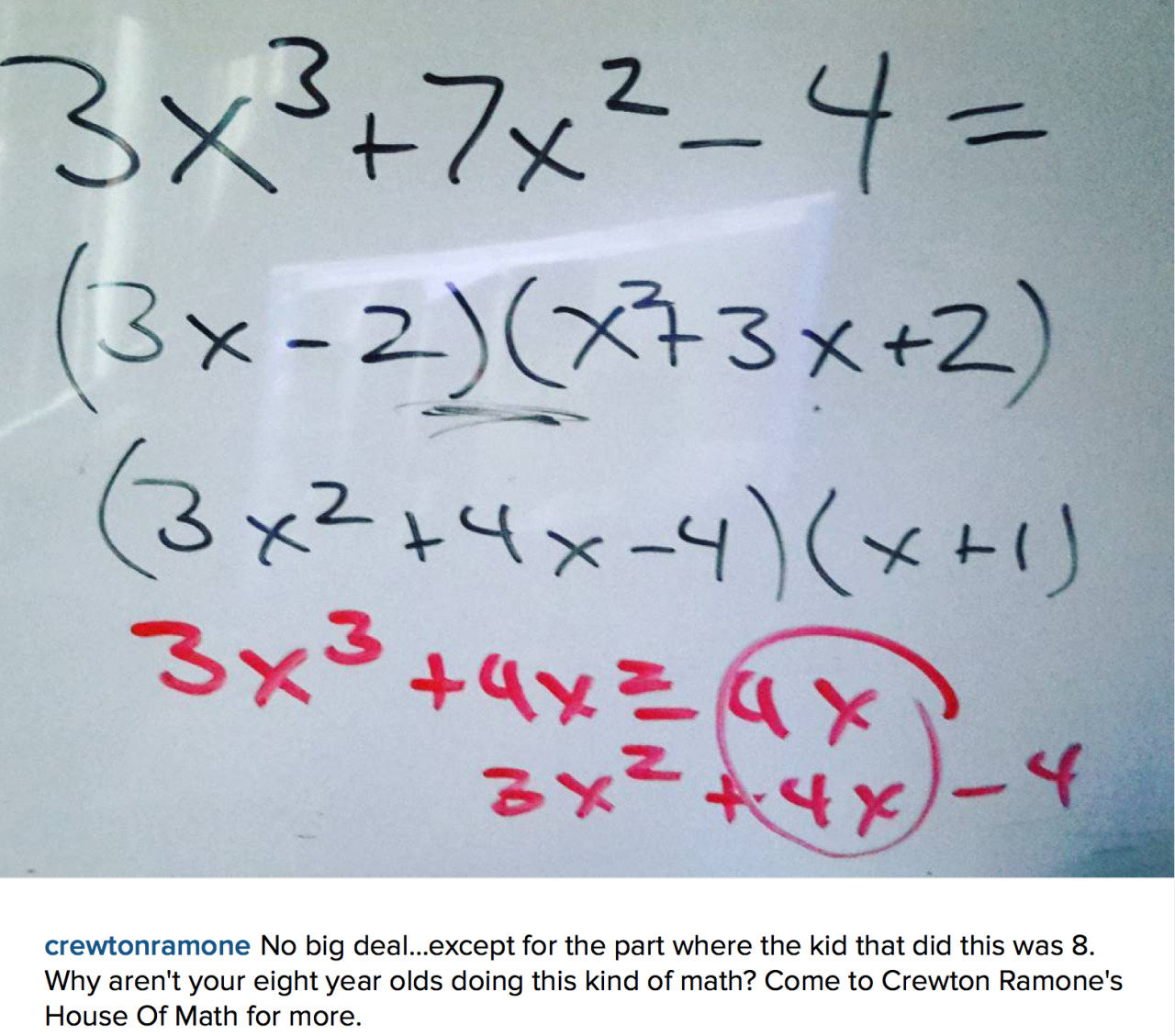 |
| A year later at Sweet 16, but now Sweet 16 is about to turn 21. |
This is a fun video covering some basic concepts in geometry. Basically, I demystify distance formula for a giggly girl. Pythagorean theorem. I always looked forward to fooling around with math with her because we always ended up laughing our butts off. (See second video.) And this usually led to sloppy notation on my part. The point is she was understanding the fundamental concepts. There is a point in the video where I write out distance formula and fail to put the 2's in for the squares...very annoying looking back but she fully understood they were squares. Other than that, I hope you see how teaching her the fundamental concept of a² + b² = c² improved her understanding dramatically and therefore her grade.
Then she could see that a was equal to the difference of x's and b was equal to the difference of y's.
a = (x₂ - x₁) b = (y₂ - y₁)
Look at how many less symbols I need to say it mathematically.
Then we have to square them and then square root them AFTER we add them together.
_______________
(x₂ - x₁)² + (y₂ - y₁)² = D² so D = √(x₂ - x₁)² + (y₂ - y₁)² which if you think about it a little is just
a² + b² = c²
a little "gussied up" as my grandma would say. Anyhow there should be 2's there...but as I said the lesson was understood.
Anyhow I dug this out of the archives. The first video hasn't been seen by anyone but me. The second one as I type this has about 50 hits.
We always just laughed and laughed and laughed. Before me, math made her cry. It was those tears that made her dad break down and call me.
These are typical high school math lessons right out of the textbook. I claim exemption from copyright under the education purposes only clause. This blog is free to view and so is the video. Besides these types of questions and horrid explanations certainly are not unique to this text book manufacturer. Often I barely have time to develop concepts because the book covers so much in just a few pages. And people say I skip around. What a joke.
Take a look at the topics covered in that first video...the way they are presented the kids can't figure out it's all basically the same concept...just variation of applying algebra and Pythagorean theorem to get the job done whether it was distance or mid-points. Learn how to use base ten blocks.











